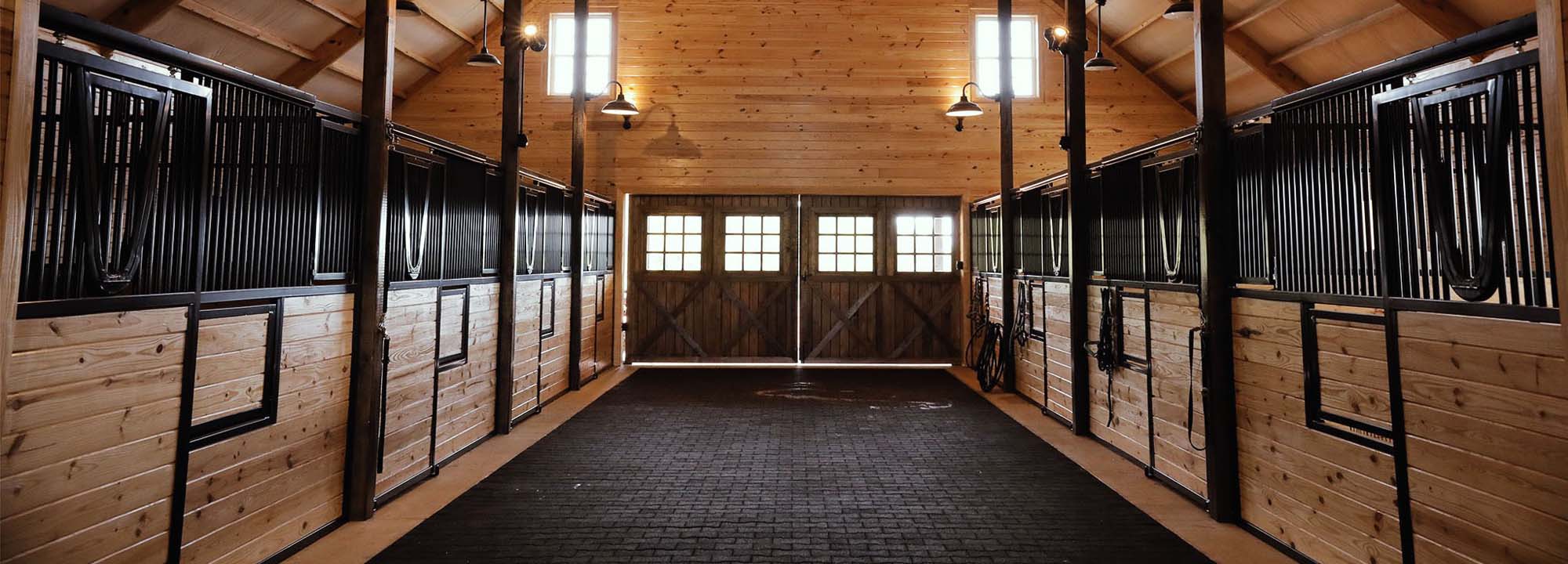By Classic Equine Equipment
Size, aesthetics and horse safety are among key considerations when planning a new equestrian barn. Equally important is ensuring that the facility is designed to optimize efficiency for your use and comfort for your equine companions. Here are three key areas that, when planning, can make a positive difference for barn owners and their horses.
Tack Storage: Effective Space Utilization
A clean, organized barn with some forethought can make all the difference. It’s very important to keep in mind the overall space needed to store key items, such as saddles, pads, blankets, halters, bridles and other accessories. Keeping saddles, saddle pads and other equipment off the floor and properly stored not only helps reduce the risk of tripping but can also maximize the available barn space. Most barns have designated areas for tack storage and, in some cases, individual tack lockers to keep equipment clean and protected.
The tack room should be in a central, easily accessible location — but not near an area of the barn exposed to water or dust. Instead, choose a sealed, dry area with good ventilation to reduce odors.
Other options for increasing tack room efficiency and functionality include a utility sink for ease in cleaning tack, a good workbench, chairs and even a bathroom. You will want to hang up any tack following your horse’s cleaning; however, due to the high-moisture environment of a wash bay, the bay should not be located next to the tack room.
Wash Bay: A Safe and Efficient Space
In the wash bay, when giving your horse a bath, try to keep the hose off the ground, away from the horse’s feet, as much as possible. Besides creating a slipping or tripping risk, it is much harder to wash a horse that’s standing on a hose than one might expect. Another good practice is to have a crosstie on either side of the wash bay hard-mounted to the building.
A storage area in the wash bay, such as a wash tray, can be a practical addition for storing soap and brushes. Be sure that anything in this area promotes airflow and good drainage..
The use of high-quality, interlocking rubber mats in the wash bay area that will not curl or pull up is recommended. This will provide a slip-resistant surface for horses and barn staff. Horseshoes are risky on concrete and even worse on wet surfaces. More information on barn flooring options can be found here.
Good lighting is also recommended to keep the area bright and safe. Be sure you are using a vapor-tight fixture that can easily and safely be sprayed off. Use a light colored, water-resistant material on the wall, such as a fiber reinforced plastic wall covering, that helps promote a bright environment and is easy to clean.
Also consider the climate. For non-heated barns in cold winter climates, take steps to make the wash bay frost-free to avoid waterline issues. An infrared heater is a good option, as it warms the wash bay surface, not the air, which is much more efficient for reducing chill.
Feed Room: Accessible Storage
Be sure the door opening to the feed room is wider than a standard door — 4 feet is ideal. Moving full bags of feed can be a challenge, and a larger door can help make stocking the feed room easier and more efficient.
Consider including shelving or storage bins to keep feed bags and containers off the floor. And consider other potential storage needs that may require this space. For example, the feed room is also a good place to store medications and vaccines.
Keeping the feed room (or hayloft) organized will make it easier for staff to know what they have without having to search for it — and to avoid running out of feed or supplements.
Plan Ahead
Many factors go into achieving an efficient horse barn, including the barn scale and applications, as well as the number of people and horses using it. When designing a new equestrian facility, having a well-thought-out plan will go a long way toward providing a barn environment that delivers sufficient space as well safety, comfort and efficiency.
About Classic Equine
From horse stalls to barn doors, stable flooring and entrance gates, Classic Equine Equipment offers the widest, high-quality product lines in the industry. Working closely with you and your architect or builder, we can help create an environment that you’ll be proud of — one that is stylish, that will allow you to care for your horses in an intuitive way and that gives you the peace of mind that comes from knowing your horses are protected by the finest equipment available. Our sales team is knowledgeable about everything from horse barn design to equine stall systems and readily available to assist you in planning your barn. For more information, visit classic-equine.com.





